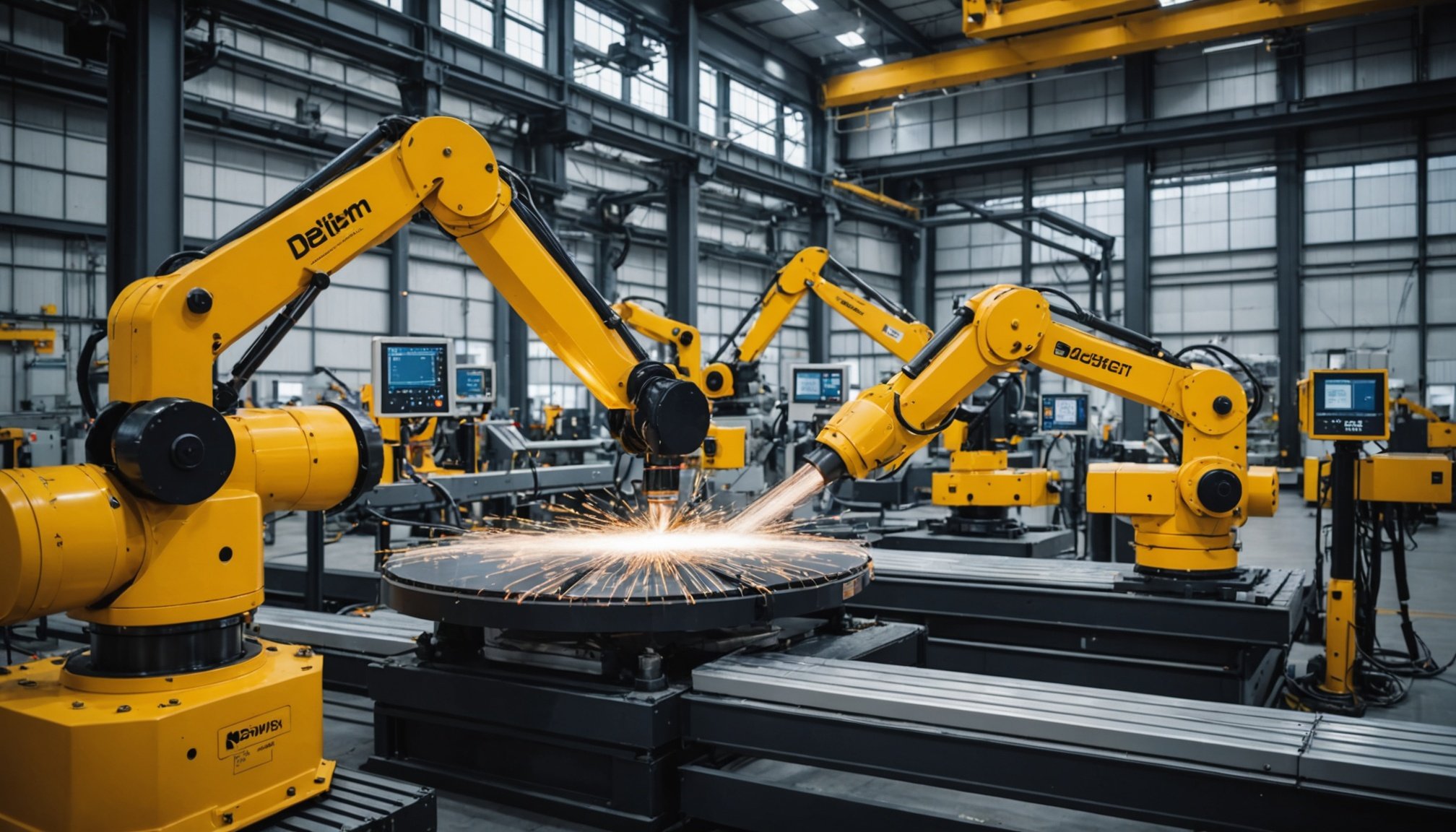Overview of Sensor Technology Innovations
Recent innovations in sensor technology have reshaped the landscape of industrial automation. These advancements have propelled industries towards remarkable efficiency enhancements and accuracy. The evolution of sensor technology has been driven by several factors. Chief among these is the need for precision and reliability in modern industrial processes. In an environment where even minor errors can result in significant losses, the drive for accuracy has catalysed notable innovations.
The benefits of these technological innovations extend beyond improved precision. For example, efficient operations lead to reduced downtime and increased production rates. Moreover, the latest advancements contribute to sustainable practices by optimising resource usage and minimising waste. This dual emphasis on efficiency and environmental responsibility resonates with the values of contemporary industries.
Also read : Transforming public infrastructure: the impact of iot technology on monitoring and maintenance solutions
Key drivers behind recent innovations include a robust focus on industrial automation needs and the relentless pursuit of operational brilliance. Greater emphasis is being placed on developing sensors that not only gather data but also analyse it in real-time, thus facilitating swift decision-making processes. These efficient sensors act as pivotal elements in streamlining industrial operations, setting the stage for a future where technology and efficiency seamlessly intertwine.
Key Advancements in Sensor Technology
Significant progress in leading sensor technologies is reshaping industrial landscapes. Trends such as smart sensors, IoT integration, and edge computing are pivotal in this transformation. Let’s examine these developments:
In the same genre : Revolutionizing learning: how virtual reality is shaping engaging educational experiences
Smart Sensors
Smart sensors are crucial in automation. These advanced devices not only gather data with precision but also enable real-time analytics. This facilitates swift decision-making, enhancing production processes and operational accuracy. Emphasising the role smart sensors play in automation reveals their potential to elevate industry standard practices.
IoT Integration
Integrating Internet of Things (IoT) technology enhances sensor effectiveness by creating a network of connected devices. IoT integration allows data to be accessed and shared efficiently across platforms, enabling seamless communication and synchronised operations. As a result, industries can leverage automation benefits by enhancing coordination and response times.
Edge Computing Capabilities
The impact of edge computing on data processing is profound. By decentralising data processing tasks, industries experience reduced latency and enhanced system responsiveness. Edge computing allows smart sensors to operate independently, managing computations closer to data sources. This setup minimises reliance on centralised systems and fortifies sensor deployment capabilities, directly benefiting industrial automation by boosting efficiency and performance.
Practical Applications in Industrial Settings
In the realm of industrial applications, sensor technology has become indispensable, bringing about significant operational improvements. A prime example is in manufacturing, where sensors optimise assembly lines by monitoring machine performance and ensuring quality control. This leads to reduced downtime and enhanced productivity, making sensor deployment crucial for maintaining competitiveness.
Supply chain management also benefits from advanced sensor usage. Sensors track and communicate the location and condition of goods in real time, enhancing transparency and efficiency across the logistics chain. This efficiency not only minimises delays but also mitigates risks related to product spoilage and loss.
Another critical application is in predictive maintenance. By continuously monitoring equipment health, sensors can detect anomalies and predict potential failures before they occur. This preventative approach saves time and resources by reducing unexpected breakdowns and prolonging machinery lifespan.
Industries adopting these sensor technologies see substantial gains in automation efficiency, resulting in cost savings and productivity boosts. As these technologies continue to evolve, their applications in industrial settings will expand, offering even more avenues for operational enhancement. The seamless integration of sensors promises a future rich in innovation, efficiency, and reliability.
Case Studies Demonstrating Success
In the realm of industrial automation, real-world examples underscore the transformative sensor effectiveness in various sectors.
Case Study: Automotive Industry
The automotive industry offers compelling insights into sensor technology’s capability to improve processes. Advanced sensors deployed on assembly lines facilitate precise robotic movements, enhancing production speed and reducing errors. This results in higher quality standards and resource efficiency.
Case Study: Food Production
Food production benefits considerably from sophisticated sensor implementations. Sensors monitor environmental conditions such as humidity and temperature, ensuring optimal storage and transportation. This application has successfully minimised spoilage, preserving product integrity and maximising shelf life.
Case Study: Pharmaceuticals
In the pharmaceutical sector, sensors are instrumental in maintaining process integrity. They ensure compliance with strict regulatory standards by providing real-time data on manufacturing practices. Sensors aid in detecting contamination risks early, increasing product safety and reliability.
These case studies highlight measurable outcomes and benefits such as increased efficiency and reduced waste. Industries adopting these technologies realise substantial operational improvements. Industry stakeholders can glean valuable lessons learned and best practices from these implementations, facilitating further innovation and application of sensor-based solutions. As sensor technologies evolve, industries stand on the brink of enhanced productivity and sustainability.
Expert Insights on Future Trends
Industry experts offer compelling predictions regarding the evolution of sensor technologies. As these technologies advance, they will become increasingly intertwined with artificial intelligence and machine learning. This synergy promises improved data analytics and predictive capabilities, enabling industries to make informed decisions swiftly.
Experts emphasise the growing role of sensors in sustainability efforts. With stricter environmental mandates on the horizon, the demand for sensors that track and optimise resource usage is set to rise. Future innovations will likely focus on energy-efficient designs and materials, aligning with global sustainability goals.
Nevertheless, challenges lie ahead. Experts highlight potential obstacles like integration complexities within existing infrastructure. The seamless incorporation of advanced sensor technologies requires overcoming substantial technical hurdles. Moreover, the need for robust cybersecurity measures to protect sensitive data will be paramount, as industries continue to digitise operations.
In summary, the future of sensor technology is poised for significant advancements, offering exciting possibilities and formidable challenges. Industry leaders should prepare to navigate these waters, leveraging expert insights to harness the full potential of these innovations for sustainable and efficient industrial practices.
Challenges Facing Sensor Technologies
In the expanding field of sensor technologies, several industry challenges can hinder seamless technology adoption. One notable complexity is integration difficulties. Industries often struggle to incorporate new sensor systems into existing infrastructure without disrupting operations. To address this, industries may require bespoke solutions to ensure compatibility and efficient function.
Data security concerns also pose significant barriers. The surge in digitisation means sensitive information could be vulnerable to cyber threats. To counteract these risks, industries must implement robust cybersecurity frameworks. Ensuring encrypted data transmission and secure storage systems can bolster trust and mitigate potential breaches.
The issue of cost-effectiveness further complicates the adoption of sensor technology. Balancing the initial investment with the long-term benefits remains a critical consideration. While advanced sensors can substantially enhance efficiency, their high upfront costs and maintenance expenses can deter investment. Industries can, however, offset these costs through increased productivity and reduced waste in the long run.
These market barriers outline the intricate landscape that industries must navigate to effectively leverage sensor technologies. By addressing these challenges, industries can unlock the full potential of sensors, driving forward technological progress and operational efficiencies.
Conclusion: The Impact of Sensors on Industrial Automation
The transformation brought by automation through sensor technologies is undeniable. This sensor impact on modern industries is extensive, reshaping operational structures and processes. By incorporating leading sensor technologies, industries can achieve unprecedented levels of precision and efficiency.
As industries continuously evolve, sensor integration becomes essential. This integration is not just a technological upgrade but is intrinsic to ensuring competitive advantage. It is crucial for industry decision-makers to understand and harness the power of sensor-driven systems. Embracing such advancements facilitates better resource management, operational excellence, and sustainable practices.
Automation transformation, made possible by sensors, accentuates the need for industries to innovate continuously. Sensors are pivotal in capturing vast data and converting it into actionable insights. These insights empower quick and informed decisions, reinforcing their value across industrial landscapes.
Ultimately, decision-makers must focus on leveraging these technological advancements to enhance operational capabilities and ensure long-term success. While challenges remain, the industry future lies in the effective integration and application of sensor technologies. Proactively addressing these barriers and investing in sensor innovation will pave the way for a future enriched with industrial automation.







